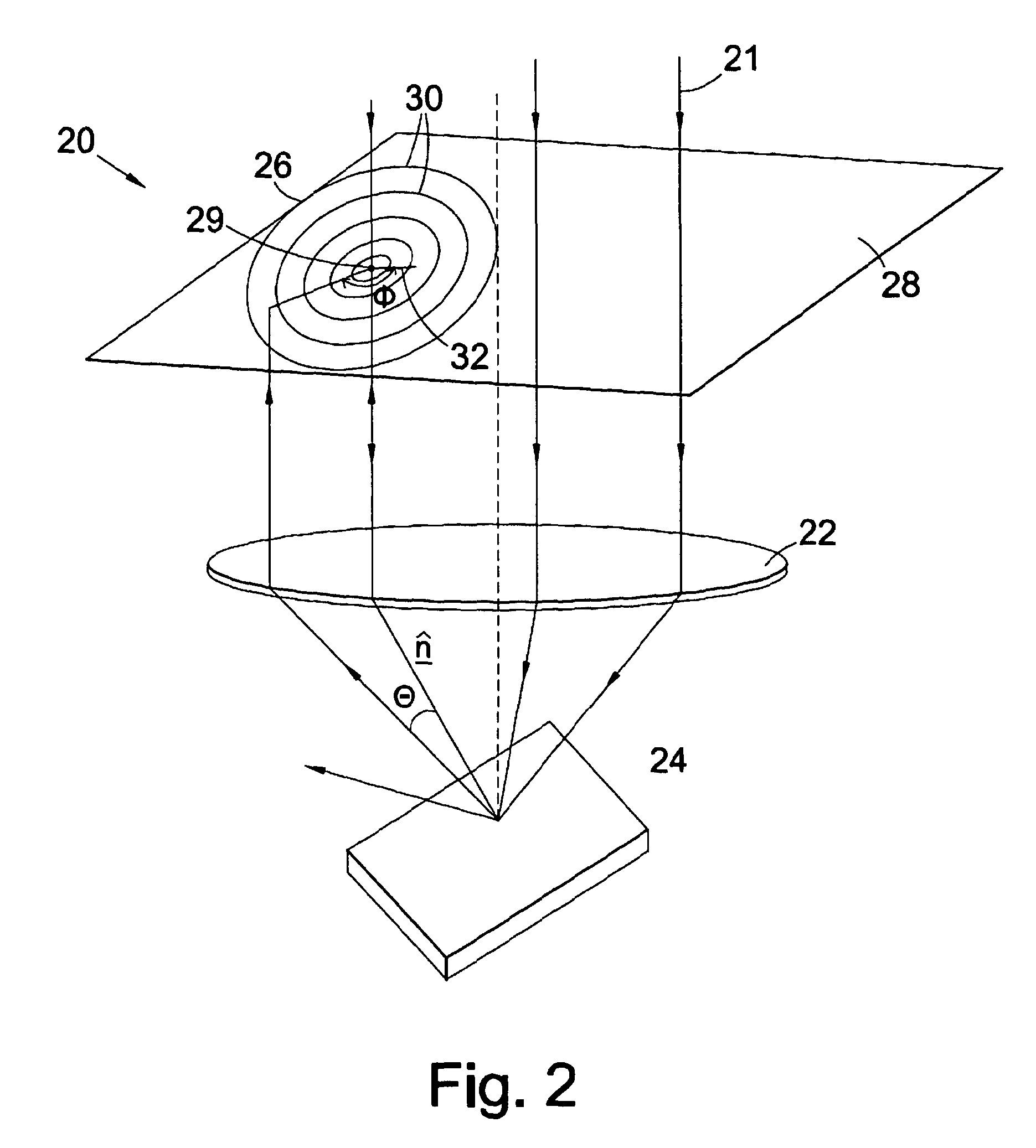Apparatus and method for locating the centre of a beam profile
a beam profile and applicator technology, applied in the field of applicator and method for locating can solve the problems of large cost and complexity of a bpr or bpe system, interference fringe pattern contamination by a large amount of so-called ‘speckle’ noise, and achieve accurate positioning of the centre of a beam profile. , the effect of removing speckle interferen
- Summary
- Abstract
- Description
- Claims
- Application Information
AI Technical Summary
Benefits of technology
Problems solved by technology
Method used
Image
Examples
Embodiment Construction
[0081]As explained above, FIG. 1 shows a typical BPR beam profile in the form of an interference pattern 10 having multiple, generally concentric ring fringes 12, taken from a sample which was misaligned with respect to the focal plane of the optical apparatus that generated the beam profile. Due to a combination of the speckle noise in the interference pattern 10 and the fact that the fringes 12 are closer together at the left-hand side of the image than they are at the right-hand side of the image, it is not possible to accurately determine where the centre of the beam profile is using standard techniques. However, as will be described in detail below, the location of the centre of the beam profile can be accurately determined using embodiments of the present invention.
[0082]FIG. 2 shows a method and apparatus according to a first embodiment of the present invention. More specifically, FIG. 2 shows a portion of a BPR measurement system 20 in which light rays 21 from a laser source...
PUM
| Property | Measurement | Unit |
|---|---|---|
| reflectance | aaaaa | aaaaa |
| angle | aaaaa | aaaaa |
| angle | aaaaa | aaaaa |
Abstract
Description
Claims
Application Information
 Login to View More
Login to View More - R&D
- Intellectual Property
- Life Sciences
- Materials
- Tech Scout
- Unparalleled Data Quality
- Higher Quality Content
- 60% Fewer Hallucinations
Browse by: Latest US Patents, China's latest patents, Technical Efficacy Thesaurus, Application Domain, Technology Topic, Popular Technical Reports.
© 2025 PatSnap. All rights reserved.Legal|Privacy policy|Modern Slavery Act Transparency Statement|Sitemap|About US| Contact US: help@patsnap.com



